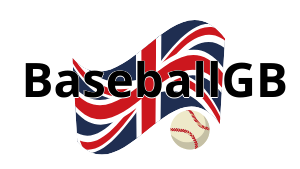(Vintage Books, 2007) 254 pages
Type “baseball†into the search box on Amazon (.com or .co.uk) and Watching Baseball Smarter: A Professional Fan’s Guide for Beginners, Semi-Experts and Deeply Serious Geeks will be one of the first books that appears on the resulting list. Designed to appeal to baseball fans of all levels in the U.S., the question is whether it works as well for a British audience?
Zack Hample has gained notoriety as an expert at “snagging baseballsâ€, even going so far as starting a business that allows fans to pay to attend games with him. His obsession, and nearly 3,500 balls certainly adds up to an obsession, was the subject of his first book entitled How to Snag Major League Baseballs. Watching Baseball Smarter has a broader aim (which wouldn’t be difficult, in fairness) to provide a fun but informative look at all aspects of the game. This ranges from details on pitchers and catchers, hitting, base-running and fielding, to statistics, ‘Random stuff to know’ (the Hall of Fame, the seventh-inning stretch etc) and ‘Random stuff to notice’ (lip-reading, facts about baseball caps etc). These chapters are followed by a very useful glossary of baseball slang. It’s a decent reference section on its own, but its main value is to allow Hample to use term after term in the main text without needing to break up the flow by explaining each and every one there and then. Words and terms that can be found in the glossary are italicised so that you know to flick to the back of book to find out more if needed.
In the preface, Hample reveals that he prefers watching baseball on TV, claiming that “watching baseball in person is certainly exciting, but it’s not the best way to learn the gameâ€. This preference is well-suited to British fans as we watch the vast majority of our baseball while sitting in front of a TV or monitor. Hample highlights the characteristics of several well-known announcers and provides a guide to the in-game graphics that decorate the screen; however the real benefit of this book is found in the parts that describe events that generally take place away from camera shot. For example, one page is devoted to how the pitcher warms up prior to an inning, revealing the different signs he uses to tell the catcher what type of pitch he is about to throw. We are normally watching adverts or listening to Jonny and Josh on Five while this is taking place, so we very rarely get to witness it. Even moments that take place during the action can pass us by. When a ground ball is hit to the second baseman, the director immediately cuts to a view of him throwing the ball to first. That’s fair enough, but it means that some British fans may be oblivious to the fact that the catcher starts sprinting down the first-base line on that play to back up the throw. Hample helps to fill in some of these gaps.
As we primarily watch games from the comfort of our homes, the section on baseball stadiums is another part of the book that should appeal to British baseball fans. Details about some of the most iconic stadiums are given alongside information about the responsibilities placed on the groundskeepers who prepare the field. What Hample doesn’t really provide is a fan’s eye view of attending ballgames, whether from a general perspective or in relation to the experience of attending specific ballparks. It would be too strong to call this an oversight, but if the book is ever updated it would be one section that I would like to see expanded.
Of course, a book of this nature can never hope to cover everything that every fan wants to know about the sport. Hample writes about the process of deciding what level to pitch the book at in the preface, making reference to the time he “spent two hours explaining baseball – from scratch – to some dude from England. He’d never seen the sport, not even a glimpse on TVâ€. This book is not written with such a complete novice in mind, but it should make sense to anyone else. Whether it really provides any new knowledge to ‘deeply serious geeks’ is debatable; however that’s not to say they won’t find it an enjoyable read.
There is plenty of competition in this genre, with Baseball for Dummies being the most obvious alternative. You probably won’t need more than one, so deciding on the right book for you will be a matter of personal taste. Baseball for Dummies is more comprehensive and strangely includes a significantly larger amount of text about the fan’s perspective of attending ballgames than Watching Baseball Smarter does. The latter is written in a more casual, fan-like style though. If you are looking for a complete guide to all facets of the sport that you can dip in and out of, then Baseball for Dummies will probably be more your thing. If you want a good overview of the sport that you can happily read from cover to cover, give Watching Baseball Smarter a go.
Have you read “Watching Baseball Smarter� Feel free to share your thoughts in the comments section below. Can you recommend any other similar books? If so, let us know.


3 comments
[…] Review: Watching Baseball Smarter 11 06 2008 From BaseballGB, which takes a look at the game from across the […]
I’ve always wanted to pick up the Dummies book, but the fact it’s written in part by Joe Morgan puts me off.
[…] to prove it here’s a web link to an article about it by famed baseball snagger, and author of ‘Watching Baseball Smarter’, Zack Hample. He’s currently writing a book about baseballs and got the chance to spend some […]